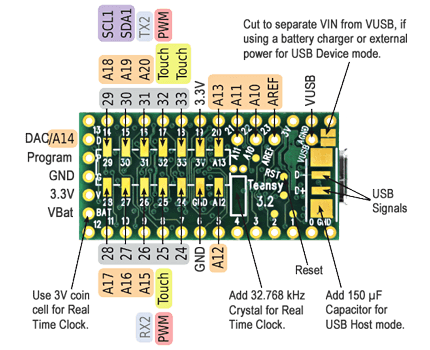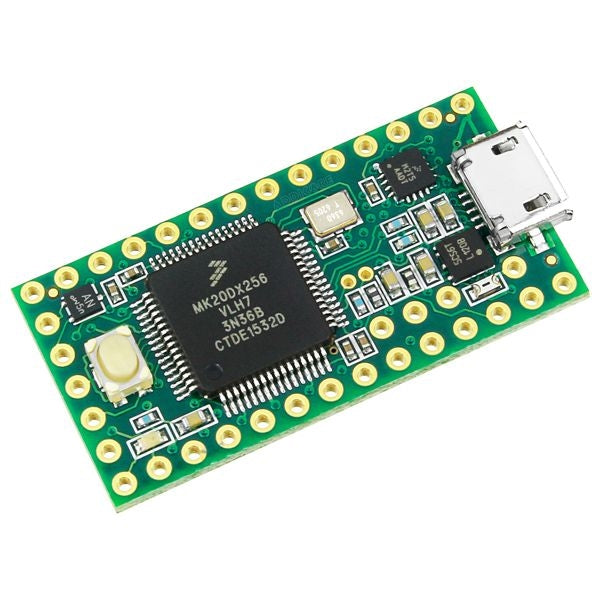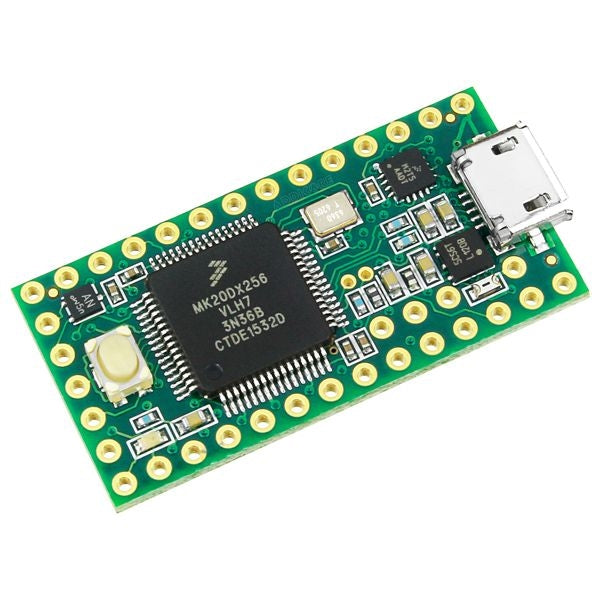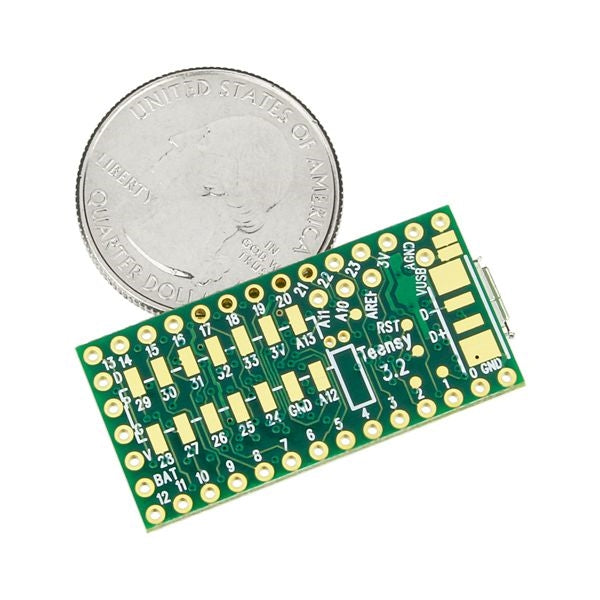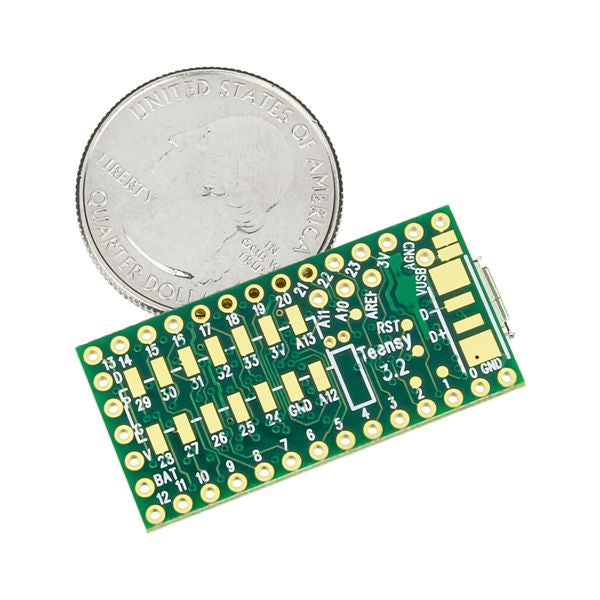Teensy 3.2 is a powerful 32 bit ARM Cortex-M4 development board, with a rich set of hardware peripherals. Teensy 3.2 delivers an impressive collection of capabilities to make modern electronic projects simpler. It features a 32 bit ARM Cortex-M4 processor at 72 MHz, 256K Flash Memory, 64K RAM, 2K EEPROM, 16 bit analog input (13 bit usable), 12 bit analog output, 3 UART (serial) ports, SPI, I2C, I2S, CAN bus, USB, and a total of 34 I/O pins.
Teensy 3.2 adds a more powerful 3.3 volt regulator, with the ability to directly power ESP8266 WIFI, WIZ820io Ethernet and other power-hungry 3.3V add-on boards.
Teensy 3.2 is well supported on the Arduino IDE using Teensyduino.
Teensy 3.2 is a direct, 100% compatible replacement for Teensy 3.1.
Product Contents
- Teensy 3.2 development board
- Pinout card
Features
- More memory for awesome projects!
- The RAM has quadrupled since 3.0, from 16K to 64K. While 16K is plenty for nearly all Arduino libraries, 64K allows for more advanced applications. Icons and graphics for color displays and audio effects requiring delays, like reverb and chorus, will become possible on Teensy 3.2.
- Flash memory has also doubled, to 256K, and provides double the memory bandwidth.
- The RAM has quadrupled since 3.0, from 16K to 64K. While 16K is plenty for nearly all Arduino libraries, 64K allows for more advanced applications. Icons and graphics for color displays and audio effects requiring delays, like reverb and chorus, will become possible on Teensy 3.2.
- 5 Volt Tolerance on Digital Inputs
- Today most new chips use 3.3V signals, but many legacy products output 5 volt digital signals. These can now be directly connected to Teensy digital inputs.
- All digital pins are 5 volt tolerant on Teensy 3.2. However, the analog-only pins (A10-A14), AREF, Program and Reset are 3.3V only.
- Today most new chips use 3.3V signals, but many legacy products output 5 volt digital signals. These can now be directly connected to Teensy digital inputs.
- 12 Bit Analog Output
- Teensy 3.2 has a proper analog output. You can always filter PWM, but true analog output responds rapidly. The output is created by the stable reference voltage, so it's doesn't vary if your power supply voltage changes slightly.
- Simply use analogWrite on the A14 pin for true analog output.
- Teensy 3.2 has a proper analog output. You can always filter PWM, but true analog output responds rapidly. The output is created by the stable reference voltage, so it's doesn't vary if your power supply voltage changes slightly.
- Two Analog to Digital Converters
- With analogRead, you can measure many signals, but only 1 at a time. Teensy 3.2 has a second ADC, so you can concurrently measure 2 analog signals. For stereo audio or power monitoring, sampling both left and right, or voltage and current at the same moment is very beneficial.
-
Pedvide's ADC library can be used to access both ADCs.
- With analogRead, you can measure many signals, but only 1 at a time. Teensy 3.2 has a second ADC, so you can concurrently measure 2 analog signals. For stereo audio or power monitoring, sampling both left and right, or voltage and current at the same moment is very beneficial.
- CAN Bus
- Controller Area Network is a communication used in automobiles. The FlexCAN Library (included with the Teensyduino installer) supports use of the CAN controller on Teensy 3.2.
- Controller Area Network is a communication used in automobiles. The FlexCAN Library (included with the Teensyduino installer) supports use of the CAN controller on Teensy 3.2.
- Real Time Clock
- See the Time Library for details.
Resources
-
Schematic
-
Processor Datasheet (MK20DX256VLH7)
-
Teensy Quickstart Guide
-
Teensyduino Software (Add-on for Arduino)
-
Using the RTC on your Teensy
- Using the true analog output
Pin Assignments
Front Side
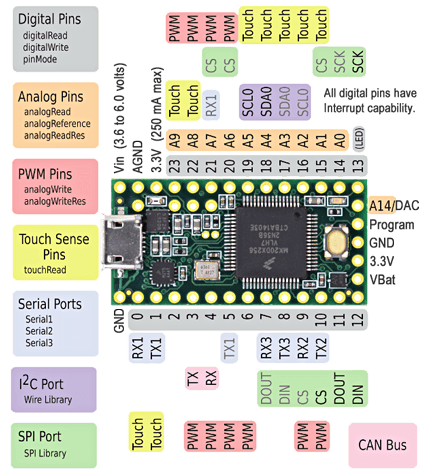
Back Side
